 Young figure skater at peace with the learning process and content with her skating journey Young figure skater at peace with the learning process and content with her skating journey We are figure skaters because we love figure skating, but very often we do things that steal the joy from our experience. We focus on our competitors, badmouth ourselves, beat ourselves up over both big and small mistakes, make excuses for bad habits that we have the power to change, fixate on the things we don’t like about our image (because societal pressure tells us we should look a certain way), spend countless hours scrolling social, and then stay up way too late because we are ruminating over the negative things we’ve experienced throughout the day. It’s not our fault–we are biologically programmed to remember negative information and experiences more easily than positive ones. This is called the negativity bias, and it’s pretty powerful. Just because we have a biological negativity bias doesn’t mean we can’t overcome the negative, though. It’s not easy–some studies estimate that we need at least 5-7 times the positive input for each negative one. The more ingrained the negative experience, the harder it is to change. We are figure skaters, though… we were born ready to tackle the hard! Thanks to neuroplasticity, we can rewire connections in the brain not just in childhood, but well into adulthood, too. First, we have to become aware of our habits, then practice replacing them with more positive and productive habits, and finally, surround ourselves with tools and like-minded people to help us in the process. Yoga can be a big help in this process for several reasons. First, studies show what yogis already know–a regular practice of yoga that includes asana, meditation, and breathwork protects and strengthens the brain . In other words, yoga and neuroplasticity go hand in hand. Second, as I’ve written about many times, the purpose of yoga is to guide us on a path to a fulfilling, happy life, and the entire framework of the 8 limbs is designed for this purpose. (See image below) The mechanism of yoga teaches us to pause and still the mind, which helps us slow down long enough to recognize and observe our habits. And since the first tenet of the 8-limbed path of yoga is ahimsa-non-harm, it makes sense that we would work to stop the harmful habits, thoughts, and behaviors. Then, being honest with ourselves (satya) enough to avoid the consumption of negative energies and ideas (saucha) and direct our energy toward helpful thoughts and behaviors (brahmacharya) with fervor (tapas), we can change our habits. Let’s start by eliminating these three harmful habits that I often see in skating.
0 Comments
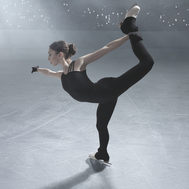 Figure Skater Executing a Spiral Variation Figure Skater Executing a Spiral Variation In last week’s blog I discussed the need for direction in our skating and explained why the common practice of setting SMART goals often doesn’t work for skaters. Without direction, we feel like we are skating in circles, getting nothing accomplished, even while working very hard. It is very frustrating! I’m from Kentucky, so I like to compare it to a thoroughbred–you can be the fastest horse in the world, but if you aren’t trained to run around the track, you can’t run the race. But SMART goals, by far the most common type of goal-setting used, can be harmful for skaters, who are often already highly focused and obsessive, and who thrive on the external validation of achievement. In my experience, the black and white nature of SMART goals creates a lot of anxiety in our already anxious modern beings. If you haven’t read that post, you can find it here. Instead of setting SMART goals, I encourage skaters to set intentions. By definition, an intention is a plan to think and act in a certain way, preferably in alignment with a greater principle or purpose. It involves staying focused and mindful in the present moment, rather than on the future or the past. Since an intention focuses on the present, it comes from the idea that we are already whole because we are all of a divine nature. The idea is that our intended action or thought is already within us… our purpose is to practice bringing it to light simply by getting to work. As always, the practice IS the path. What is a Good Intention for Skaters?In yoga, an intention is also called a Sankalpa, which can also be translated as a resolve or a vow to be upheld above all others.
This doesn’t mean that we forget all our other obligations and become single-minded to the point of obsessiveness (remember–we are trying to leave behind the obsessiveness of SMART goals). It means that we will be resolved to have one mindset or one purpose for each practice or period of practice–whether that period is a season, a month, a week, a day, or an hour. If you really have one quality you want to cultivate in your life, maybe your intention is one word for a season at a time. An example of this is how I choose a word of the year instead of choosing a list of resolutions–abundance, love, courage, flexibility, etc. Then I try to make sure my thoughts, choices, and actions are in alignment with this word. If you practice for many hours a day, you may have one purpose for each session. It can be a word–maybe you choose one of the yamas–or a positive statement or affirmation, such as “I use my breath to stay calm when I run into traffic during my program,” or “I am aware of my self-talk.” You can even make a positive statement about an element you really want to develop–i.e. I easily execute 9 revolutions on a forward camel spin. On your first session, you can focus on program run-throughs and all that entails, and on the next session, you focus on exercises for the camel spin. 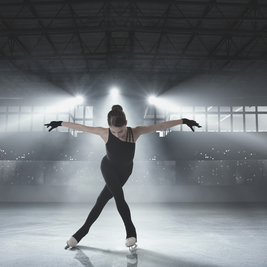 Female Figure Skater in an Opening Pose Female Figure Skater in an Opening Pose For the past several years I have really struggled with focus. I was miserable–my brain darting between tasks, unable to focus on any one thing for more than a few seconds at a time. During the act of teaching things felt fine–it’s naturally faster paced–but sitting to work at a computer for my other job, for writing, or for planning was challenging in a way it never had been. Even though I rarely eat processed foods, aim to get enough sleep, practice meditation, exercise, and drink enough water, I just… couldn’t. be. efficient. I knew something was off, but I still felt like a failure. Then, I read somewhere that “systems will beat hard work and talent every time”. And I realized that I wasn’t failing, but I certainly was spinning my wheels. I think it’s safe to say that, in 2023, the vast majority of humans struggle with focus. It’s impossible to process information as quickly as technology throws it at us. We can’t keep up with our obligations because our brains simply haven’t evolved as quickly as society demands them to. Add in processed foods, lack of sleep, the chaos of the world, and the frenetic pace of achievement we are compelled to follow, and our brains are in crisis. I needed a system and tools to help me dedicate time to do the work that really mattered most – like writing these blogs for the skating world – and to block out distractions. So, I went to work finding tools to help streamline my processes and started practicing their implementation, and I plugged in breaks throughout my day to allow my brain to reset in between tasks. This process has reminded me so much of skating. We’ve all seen skaters spin their wheels on the ice–they get so bogged down with what needs to be done that they move from one thing to the next with no focused effort to make any improvement. Or even worse, they fail to do anything because deciding where to begin is too difficult! In getting to work, it’s all about using your energy in the right way - Brahmacharya. (A few weeks ago I wrote about the yamas - a code of conduct presented to us in the 8 limbs of yoga… Brahmacharya is one of the yamas. You can read more about it here.) Coaches know this, parents know this, and deep down, skaters know it, too. But for it to click and to get a system in place can be very challenging. Enter the SMART goal. 3/18/2023 1 Comment Failing a Figure Skating Test Yogi Tea reminds us to celebrate both our successes and failures Yogi Tea reminds us to celebrate both our successes and failures I wish I had failed more as a skater. Of course, I experienced minor failures every day in practice as I worked to achieve new skills, but not until the end of my career did I fail a test. Most things in skating can only be really learned by doing, and sometimes things don’t really click until you start to learn something even harder. Take jumping, for example. At some point, in order to begin learning a double jump, you have to say that the single is good enough. You continue to work on the single, but you can move on. However, I used to get so angry at myself for making mistakes in practice and needed my skills to be so perfect, that I wouldn’t allow myself to move on to learn new things. I was so terrified of making mistakes, that I stunted my progress and robbed myself of the joy of achievement. Instead, I turned achievement into obligation and a requirement for proving my worth as a human. We can go more in-depth about the pitfalls of perfectionism in a later post, but I will say that the best skaters are the ones who take risks and don’t let failure stop them from trying. They are the ones that can hustle and skate with abandon and really push their limits. So why, then, as a society, do we only celebrate our successes? 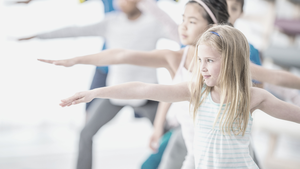 Young skaters practicing yoga Young skaters practicing yoga Whether you are focused on athletic achievement or life lessons, creating a safe space is crucial for the well-being of everyone involved. As a skater, I trained in environments that, from the outside, appeared healthy and safe. There was no physical or sexual abuse that I am aware of, and there was none of the heinous screaming and name-calling that still exists in many rinks. However, when I was younger, my coaches behaved like mean girls in club politics and created ugly rivalries where there should have been collegiality and friendship. Later, at a different facility, my peers had weekly weigh-ins, and I was applauded and revered for drastic weight loss that led me down a decades-long path of eating disorders. In yet another facility, I was made to feel like an imposter–just a “tester” among those actively competing. As a coach, I have always tried very hard not to repeat the mistakes of my teachers. Most of them were good-hearted with good intentions, even if they were often blinded by their own competitive nature and their own past wounds and teachings. So, without a good model in my background, I repeated some of the same mistakes. Pushed kids when they didn’t need to be pushed, compared skaters to one another when I shouldn’t have, offered dietary advice without being a licensed dietitian and tried to convince a skater to stay in the sport when what she really, really wanted was to be done. For many years I coached in an environment that closely followed Safesport guidelines. Yet, it didn’t feel healthy and was arguably quite harmful to me and many others. Playing favorites, forming cliques, ignoring skaters who need extra emotional support, and politicking amongst coaches are surefire ways to ruin a healthy, collegial environment. While Safesport and SkateSafe attempt to prevent and prosecute the most egregious acts of abuse in our sport, they fall short in many ways, especially in instances of emotional abuse. Their shortcomings are beyond the scope of the post, so I will simply say that I believe we need good models of conduct and spirit that go deeper than US Figure Skating’s Code of Conduct and the PSA’s professional standards.  Way marker for the Camino de Santiago, showing items pilgrims have left behind to symbolize letting go of baggage. Way marker for the Camino de Santiago, showing items pilgrims have left behind to symbolize letting go of baggage. Young student athletes may not realize it yet, but parents in competitive youth sports know that even though the days are long, the years fly by. If we know this, then why don’t we learn to savor the little moments of the sports journey instead of rushing about from one thing to the next, cramming as many things into a day as possible? When we strive for efficiency just to achieve more (rather than as a means to free up time for hobbies and quality time), then efficiency is just code for pressure. And the pressure we have created here in the US has spread around the world. Recently I met some friends from Guadalajara, Mexico whose children attend the American School there—a bilingual private school that issues both a Mexican and a U.S. high school diploma. Although they are Mexicans living in Mexico, my new friends said, their kids are expected to keep up with the pace of the American academic system, applying to dozens of universities and participating in multiple sports and activities. It’s all about standing out from the competition. I am a highly sensitive recovering perfectionist who suffers from anxiety and is easily overstimulated. As such, competition is a chronic stressor for me. While I have implemented many tools to be less bothered by others' words and actions and to stay grounded in my own journey, many days are still a struggle. Do more, be more, buy more, the world around us says. When the pace of growth and information overload makes our bodies and minds suffer, it’s time to step away from the competition and courageously and honestly give ourselves a reset. What kind of reset? Sometimes a reset may look like embodiment practices such as restorative yoga, conscious breathing, and walking in nature. Other times it may look like journaling, meditation, and talk therapy. Even other times, though, that reset might look like a dramatic change of scenery. Over twenty years ago I learned that one of the best ways for me to reset my nervous system—bring it back into balance—after chronic overwhelm was to get far away from the outside influences and expectations pulling me in all directions. I like to go far enough away that it’s clear to myself and others that communication will be minimal while I’m away. If you or others have a hard time respecting your boundaries, or if you are easily overwhelmed by competing demands, this type of physical distance can be a helpful tool for a personal reset. To be clear— getting away is never an escape from your problems long-term. You must do deep work on yourself for any change to be lasting. Mindful travel, however, is an opportunity to reset your nervous system out of fight or flight mode and to help you see things through a different lens. To this end, I decided to travel to Spain to walk the Camino de Santiago. 5/27/2022 0 Comments Why I Started to Drop the Ball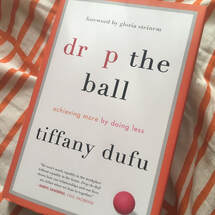 Tiffany Dufu’s Drop the Ball is a game changer for me and for any former athlete struggling to move past the hustle culture of high-level sports. While Dufu spends a bit of time pointing out facts about the gender based pay gap and the need for all-in-partnership in the home, the more impactful parts of the book are her tangible examples of the emotional labor imbalance and how that relates to her journey as a recovering perfectionist. So often perfectionists don’t allow others to do the work if it’s not done as they (we) would do it. The main point of Dufu's book, though, is that perfectionists have to be willing and able to "drop the ball" before others will pick it up. This holds true in school work, volunteer work, housework, and on and on, where the work simply doesn't need to be perfect...where it just needs to be good enough. As two of my coaches often say, "We must learn to embrace the B-." In her book Dufu chronicles the humbling experiences of letting go of tasks in the home in order to achieve some of her more important life’s work—advancing and empowering women and girls and raising two children to be globally conscious citizens. If we are too busy checking things off our to-do list to cultivate a network of relationships, or if we are too caught up in the minutiae of day-to-day life, we simply cannot have the bandwidth to tackle larger, more important projects. Dufu provides real examples of how she worked through some sticking points in her life to discover not only her core values but also how to empower her partner at home to share more of the workload. She says women have faith in a “false meritocracy” (p.64), which often leads us to expect that we can work harder and will naturally be recognized for our productivity. Therefore, we work and work and work to the detriment to our mental, physical, and emotional health. 11/11/2021 0 Comments In Times of Transition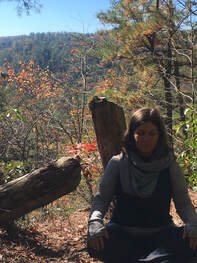 Northern Arizona has four seasons, unlike the rest of Arizona. Phoenix is glorious in the winter, and miserable in the summers, and the landscape is made of various shades of reds and browns. It’s beautiful, but it stays the same year-round. When I lived in Arizona, of all the things I missed about Kentucky besides my family, I missed the changing seasons the most. That most visceral reminder of the passage of time and the cycles of life is like a road map guiding us on our journey. The timelines of my memories from Arizona aren’t as clear as they are of memories from other places simply because the landscape doesn’t change very much throughout the year. Life is full of transitions—from one season to the next, one relationship to another, beginning and ending semesters, changing jobs, growing children, retirement, and on and on. Sometimes we mark the dates on the calendar months in advance, and other times, radical change is forced upon us at the most inopportune times. Everyone knows this, and writers of all genres from ancient literature to pop songs have written about it. The only thing constant is change, right? Yet, as humans, we try to fight the end of a season and cling to what is in front of us, sometimes even while we are dreaming about something different. A summer’s last hurrah, the sledding adventure in March, the pleading with an ex-boyfriend to please come back are all examples of this. In our professional or athletic lives we can be completely burnt out and still want to stay in the game. Why do we resist making a change(s) that is necessary to move us forward? Because our brains are hard-wired to be fearful of new things and because change can require a lot of work. One thing you realize as you get older, though, is that changes will come whether you are ready for them or not. Family members get sick, we get injured, children and parents get older, the economy goes up and down, accidents happen, and people around us make decisions that impact us. Right now, I’m closing another chapter in my professional life to hopefully forge a new one a few years sooner than I imagined. At the same time, I am caring for a very ill, aging aunt who just wants to feel safe and loved, and helping my son write essays for the convoluted high school application process we have in our school district. In mid-summer I did not know I was heading towards any of these concurrent paths, yet somehow I ended up here. And I’m trying to be more present than ever for my family, maintain my health and sense of self, while still serving the students I deeply care about. The question begging to be asked, then, is how do we adapt to such sudden changes? How do we navigate life’s big transitions gracefully? I find the answer to be simple: Always go back to a yoga practice that incorporates breathwork, asana, and meditation. There are many reasons this works, but my favorite way to explain it clearly is that the breathing sets the stage for the movement, and the movement helps you sit still enough to meditate comfortably. The breath and the movement work hand in hand to balance the nervous system and strengthen your stress response. Then, in the stillness of the meditation is where you can find what you’re looking for—the courage to identify and let go of whatever is extra and stand firmly present in what matters most to you. The sooner we get used to idea of constant change (for good and bad), the sooner we can stop fighting the transition and go with the flow. Don’t get too attached to the phase of life that you’re in—try to experience it in its fullest, because you never know when the next chapter will begin. In the meantime, do more yoga. Don't know where to start? Check out some of my free practices. 7/12/2021 0 Comments Why beach time?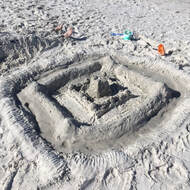 For as long as I can remember, my family and I have been going to the beach at the beginning of June. When I was little, it was my parents, my sister, and I that went. Through middle and high school, my aunts, cousins, mom, and I travelled together. When I moved away for several years I couldn't join them, but once I came back to Kentucky, my parents and I started the annual tradition again. This post-COVID vaccine year, my husband and stepson joined us. While I love adventure and travelling new places, going to the same beach has become somewhat sacred to me--a ritual, if you will, and it's one that I look forward immensely. I read books, listen to the surf, wear a fancy sun hat, and visit our favorite restaurants. It's fun in the sun and sand (have you built a sand castle lately???), and a time to rest and smell the salty air. In sports we are always training towards that next goal or the next great feat, and we don't prioritize time off for recovery or family. Our competitive society teaches us that our worth is measured by our productivity, and our sports conditioning truly makes us believe it. We forget that we are enough as we are. We forget that the beauty of life is found in the small things. Because of this, when you leave sports, you may feel lazy or unproductive when you don't continue to achieve "great things". You may feel lost, looking for ways to build community, find purpose, and regain control of your life. One way to help regain control is to use rhythm and ritual to help ground yourself. Rituals have been a part of the human experience for thousands of years, and while modern society has drifted away from them, there's no doubt they can have a major impact on our lives. Paying attention to the rhythm of the seasons and celebrating and creating traditions with loved ones can bring new meaning to your life, especially when things feel otherwise chaotic. For me, sitting by the pool with my mom every June in St. Pete Beach is one of those rituals that always brings me back to my core. 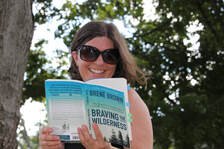 Some of you may have heard me mention this book a few moths ago, but it’s so good, that I have to bring it back into the conversation. In fact, it’s so good, that I have chosen it for the inaugural Skating Yogi Book Group. Here’s why: At the start of 2021, I decided to do some deep personal work and dive into some of my mental and emotional sticking points. As part of this, I took part in a 6-week immersive course by my friend, the amazing Dr. Katie Blake. This course was intended to guide participants through the process of deconstructing faith, offering support and community rather than dogma. It turns out that deconstructing faith is quite similar to dissecting the components of any culture or belief system, including those of competitive sports. This makes sense, since sports and religion have been intricately linked since ancient times in Native American, Eastern, and Western civilizations. While modern sports are a secular pursuit, many of the values and details of religion and sports are the same. Both deal with relationships to self and others, personal sacrifice, the pursuit of non-material achievements, and the promotion of purity and higher ideals. Additionally, both rely on ritual, rulebooks, holy houses, and heroes, and both can unite a group of people or tragically divide them. The first book we read in Dr. Katie Blake’s course was Brené Brown’s Braving the Wilderness. In this book Dr. Brown talks about our deep, biological need for community and how this need is becoming harder and harder to fulfill in today’s polarized society. Finding community has become even harder since the onset of the COVID-19 pandemic and the escalations of political tensions. Sports clubs and churches have traditionally offered us this belonging, but as society has become more fragmented, fewer people are staying in communities that we once were a part of. Leaving a restrictive community can be liberating, particularly for people who have traditionally been oppressed. Nevertheless, this freedom can also leave us quite alone. As Dr. Brown says, even as our need for community is greater than perhaps ever before, we are isolating ourselves more and more. We have lost our ability to find common ground, so we retreat. How do we fix it? According to Dr. Brown, the only way to fix our isolation is to learn to belong to no one but ourselves. You read that right—in order to find community with others, we must learn to belong primarily to ourselves. In Braving the Wilderness, Dr. Brown explains her theory of belonging from her 2010 book titled The Gifts of Imperfection, saying: Belonging is the innate human desire to be part of something larger than us. Because this yearning is so primal, we often try to acquire it by fitting in and by seeking approval, which are not only hollow substitutes for belonging, but often barriers to it. Because true belonging only happens when we present our authentic, imperfect selves to the world, our sense of belonging can never be greater than our level of self-acceptance. Wow. Read that last line again—“… our sense of belonging can never be greater than our level of self-acceptance.” We have all heard the sayings “you can’t help someone if they won’t help themselves” or “you can’t accept love until you love yourself”, and maybe we have even had experience with these realities. Either way, reading Dr. Brown’s theory of belonging helped things click for me in a completely new way. How often do we do or say things just to fit in? When you are having doubts about your sport or your desires to keep competing, or are growing apart from your friends and teammates, how long are you willing to hide your true desires from yourself and others? How much of yourself are you willing to sacrifice? Authenticity takes courage, but it’s the only true path to belonging. Dr. Brown goes on to say: True belonging is not something that you negotiate externally, it’s what you carry in your heart. It’s finding the sacredness in being a part of something and in braving the wilderness alone. When we reach this place, even momentarily, we belong everywhere and nowhere. I am here to tell you that you can find your place in sport and still be your authentic self. You can be part of a club or a team and not sacrifice your sense of self. As one of my students once said, “I realized that you can have friends and not be BFF’s with all of them”. If your current situation in sport does not allow you to be your true self, then I encourage you to explore why and to reach out for help to explore your options. Only when we belong to ourselves can we truly belong anywhere. This is my hope for you. Our first book club chat will be Sunday, Aug 15, 6:15-7:00 pm EDT. Register here (it's free) and join us! We will discuss Braving the Wilderness in more depth. To support local booksellers, you can purchase your book here. (This is an affiliate link, and I earn a small commission with each purchase). Are you looking for guidance on how to transition into a new place within or beyond your sport? Sign up for my mailing list to receive my 7 Principles for Life Beyond Sports to help you on your journey. |
Author // the skating yogiMy name is Sarah Neal. I have been immersed in the world of figure skating for over four decades. I have seen firsthand the abuse that happens at the higher levels of our sport and experienced how that trickles down into unhealthy training practices and habits at the grassroots. I have seen this play out in the operations of the very institutions that control our sport. Whether for a profession or hobby, pursuing skating should be a joyful, rewarding process, an opportunity for athletic and personal growth, and a place to build lasting friendships. Archives
March 2024
CategoriesAll Athlete Well Being Athlete Well-Being Deep Connections Embodied Movement And Meditation Practices Life After Competition Mindful Living |
Search by typing & pressing enter

 RSS Feed
RSS Feed